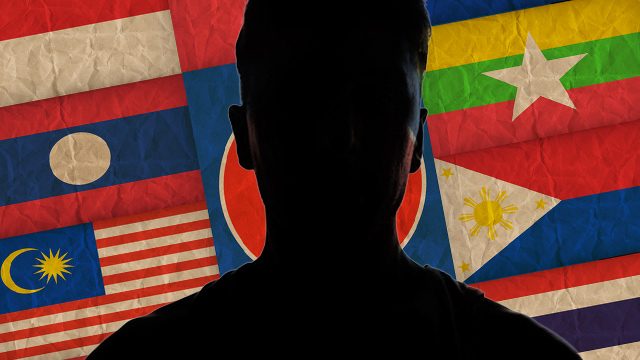SUMMARY
This is AI generated summarization, which may have errors. For context, always refer to the full article.
 Not so long ago, “integration” was such a buzzword among academics and politicians.
Not so long ago, “integration” was such a buzzword among academics and politicians.
Excitement fueled debates, debates inspired public thought, and public thought spurred only more excitement on the perceived opportunities and challenges of the ASEAN integration. Examining the integration meant, more than anything else, making sense out of the situation of the Philippines in the context of the regional movement in 2015.
Now that it is actually 2015, the drive to scrutinize both the good and bad promises of the integration has never been this high. Perhaps the integration isn’t yet happening in the manner we expected it to occur, but hints of change are slowly starting to take shape.
Thinking it was a good opportunity to bring the youth into the picture, my colleagues and I started the ASEAN Youth Dialogues (AYD) – a movement that brings young Filipinos and experts together to talk about ASEAN and the integration in ordinary language through a series of forums and workshops.
From this initiative, not only did we see how young Filipinos were anxious about their qualifications to compete in the region, but we also saw an interesting mix of perspectives on the way of managing our relationships and character with our Southeast Asian counterparts.
While many experts we’ve invited would agree that the Philippines is in a sound position to partake in the integration, a different kind of inquiry deals with how we must imagine ourselves as “one” ASEAN community with a unifying identity.
Given the diversity of the region, is an ASEAN identity truly possible?
An ASEAN identity?
Defining who we are as a region is an important but difficult task to accomplish.
Economic and political processes of the integration, as we have learned from AYD, must always be reinforced by an identity that will form a strong foundation of ASEAN’s interests.
While the political and economic dimensions of the integration largely fall within the scope of governments and big business players, the socio-cultural aspect, which involves our identity, is more relatable to the ordinary individual.
We often see people build on an ASEAN identity based on our geographical location and our personal appearances. Statements such as “Mukha siyang Pinoy!” (He/she looks like a Filipino!) may reinforce that kind of personal connection to the larger region when we encounter and interact with other ASEAN nationals such as Malaysians and Indonesians.

However, forming a regional identity goes beyond our personal appearances. Expressing our individuality and relating with others demand a greater deal of acceptance especially when there are preconceptions in looking at other cultures.
“It’s difficult to find similarities with one another if we have preexisting biases,” according to Dr Andrea Soco-Roda, one of my colleagues in the Ateneo de Manila University.
“Labels such as ‘cockroach’, ‘monkey’, and ‘maid’ are collectively assigned to certain nationalities,” she said. “While diversity can be a good thing, stereotypical ways of thinking can prevent cultural understanding,” she added.
True enough, this reality is not far from our shores. For instance, some Singaporeans feel a level of discomfort when they are associated with Filipinos because of the prevailing image of the female domestic helper in their homeland. In the same manner, I personally know many Filipinos who take offense when they are mistaken as another ASEAN national due to stereotypes shaped by religious differences.
While the integration entails governments to lessen national borders for freer exchanges, the burden of bringing down our personal boundaries with each other to accept regional similarities and differences lies squarely on us.
Where do we start?
While a large part of our culture and identity are articulated through our governments, it is still crucial for us ordinary citizens to have that heightened consciousness of our neighbors to achieve a greater sense of community in ASEAN.
Imagining ourselves as one ASEAN community does not call us to ignore our differences in languages, ethnicity, religion, and everyday lived experiences.
Perhaps a good place to start is to examine the way we consider ourselves as an inhabitant of Southeast Asia and as a “citizen” of ASEAN. By thinking as an individual who is part of a larger context, perhaps we can then start examining the way we treat and create our notions of our Southeast Asian neighbors.
Right now, 10 countries are united under one flag in spite of the people’s struggle in identifying with the rest of the region. Finding a niche of commonality in the midst of our contrasting norms and values is indeed tough.
Fostering a unifying identity will always oblige us to find ways to cooperate with one another and challenge our preconceptions.
With the reality of the ASEAN and its integration, having a reflexive way of thinking is just one of the first few steps to envision ourselves as part of one community and, consequently, to bring down those barriers to belongingness and greater regional understanding. – Rappler.com
John Patrick Allanegui is one of the convenors of the ASEAN Youth Dialogues – a movement that brings together young people to tackle the ASEAN integration and other regional issues. He is the managing editor of Verstehen. He tweets at @JohnAllanegui.
Silhouette studio shot isolated on white and ASEAN economic community on the paper texture from Shutterstock
Add a comment
How does this make you feel?
There are no comments yet. Add your comment to start the conversation.